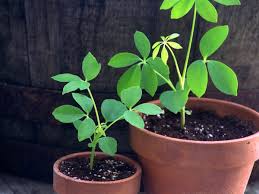The flow of energy from one organism to another is called a food chain. A food web is when several different food chains are connected together. Producers, such as sunflowers, are at the beginning of the food chain and are a great source of energy for animals. Consumers are second in the food chain and include: herbivores (primary), carnivores (secondary) and omnivores (tertiary). Herbivores are plant eaters such as squirrels, carnivores are meat eaters such as leopards, and omnivores eat both meat and plants such as grizzly bears. Decomposers, such as bacteria, are the final part of the food chain and are responsible for breaking down nutrients and returning them to the soil. Producers, consumers and decomposers are equally important in the food chain because each link relies on the previous link for energy in order to survive in the ecosystem. For example, through photosynthesis grass grows, which gives energy to a grasshopper, which gives energy to a rat, which gives energy to a snake, which gives energy to a hawk, which gives energy to the Great Horned Owl. When the owl dies, its body is decomposed and its nutrients are returned back to the soil, where the chain repeats itself. Without decomposers, the food chain wouldn't be able to function because they are the final link and there would be no way for the nutrients of dead organisms to be recycled back into the food chain.


Producer Herbivore-Consumer


Carnivore-Consumer Omnivore-Consumer

Decomposer
Helpful Websites
Not only does this website have a lot of information about food chains, but it also gives you instructions on how to build a food web with your friends made with a ball of yarn. This seems like a fun and interactive activity that can help you understand food chains and food webs in a creative and hands-on way.
This website explains important words that are related to food chains and includes photos. It also provides distinguishing characteristics between a food chain and a food web.
This website allows you to create an animated food chain. It also explains the consequences of removing a specific organism from the food chain and how it affects the other organisms involved in the food chain.


No comments:
Post a Comment